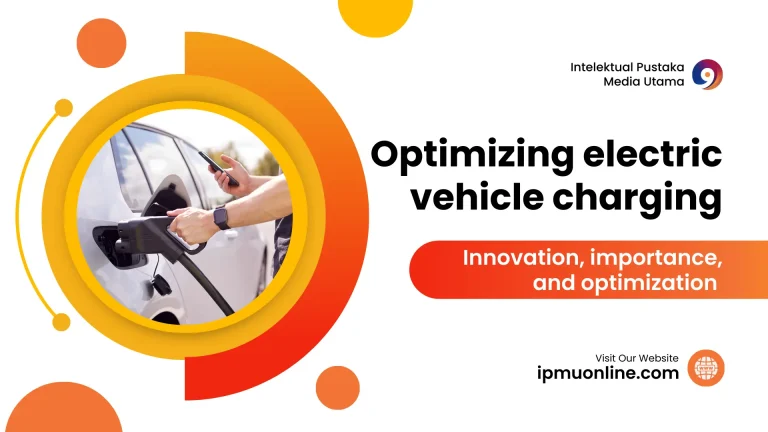Salam, rekan Nawala! Semoga kalian selalu dalam keadaan sehat.
Ini adalah IAES Nawala dari Institute of Advanced Engineering and Science. Hari ini kami akan berbagi kabar berkaitan dengan pendeteksian kendaraan menggunakan IoT. Deteksi kendaraan menggunakan IoT adalah integrasi teknologi IoT ke dalam sistem tertanam seperti mikrokontroler dan mikroprosesor. Sistem ini dilengkapi dengan konektivitas, sensor, protokol IoT, dan keamanan untuk pertukaran data dan kontrol yang aman. Mohammed (2023) membahas penerapan you only look once (YOLO) untuk deteksi dan klasifikasi kendaraan. Penelitian ini mengevaluasi kinerja YOLOv3, YOLOv4, dan YOLOv5 dalam mendeteksi dan mengklasifikasikan mobil, truk, bus, sepeda motor, dan sepeda. Penelitian ini menggunakan gambar pelatihan dari dataset common objects in context (COCO) dan gambar terbuka, serta gambar pengujian yang diambil di jalan raya di Malaysia, yang mewakili variasi pencahayaan dan kendaraan yang berbeda. Hasil percobaan menunjukkan bahwa YOLOv5 mendeteksi kendaraan dengan lebih akurat tetapi lebih lambat daripada YOLOv4 dan YOLOv3. Makalah ini menyarankan agar penelitian di masa depan termasuk bereksperimen dengan versi YOLO yang lebih baru.
Vehicle detection and classification using three variations of you only look once algorithm
Gehad Saleh Ahmed Mohammed, Norizan Mat Diah, Zaidah Ibrahim, Nursuriati Jamil
Vehicle detection and classification are essential for advanced driver assistance systems (ADAS) and even traffic camera surveillance. Yet, it is challenging due to complex backgrounds, varying illumination intensities, occlusions, vehicle size, and type variations. This paper aims to apply you only look once (YOLO) since it has been proven to produce high object detection and classification accuracy. There are various versions of YOLO, and their performances differ. An investigation on the detection and classification performance of YOLOv3, YOLOv4, and YOLOv5 has been conducted. The training images were from common objects in context (COCO) and open image, two publicly available datasets. The testing input images were captured on a few highways in two main cities in Malaysia, namely Shah Alam and Kuala Lumpur. These images were captured using a mobile phone camera with different backgrounds during the day and night, representing different illuminations and varying types and sizes of vehicles. The accuracy and speed of detecting and classifying cars, trucks, buses, motorcycles, and bicycles have been evaluated. The experimental results show that YOLOv5 detects vehicles more accurately but slower than its predecessors, namely YOLOv4 and YOLOv3. Future work includes experimenting with newer versions of YOLO.
Selain penerapan pada jalan raya, Kusuma dkk. (2023) menerapkan deteksi kendaraan di tempat parkir. Mereka menghadirkan portal parkir tanpa sentuh yang dirancang untuk meminimalisir kontak langsung sebagai respons terhadap wabah COVID-19. Sistem ini menggunakan kamera ESP32-CAM, sensor ultrasonik, sensor inframerah pasif, motor servo, LED, LCD, tombol, dan komponen lainnya. Sistem ini dibangun menggunakan Arduino IDE, Android, dan Blynk. Para penulis melaporkan bahwa kinerja sistem secara keseluruhan mencapai 100% setelah pengujian dan analisis menyeluruh.
An internet of things-based touchless parking system using ESP32-CAM
Vicky Andria Kusuma, Hamzah Arof, Sena Sukmananda Suprapto, Bambang Suharto, Rizky Amalia Sinulingga, Fadli Ama
As technology continues to advance, governments around the world have implemented health protocols to minimize direct contact between individuals and objects, in response to the ongoing COVID-19 outbreak. To address this need, a touchless parking portal was designed using a microcontroller-based and internet of things (IoT) -based system, with the Arduino UNO microcontroller device serving as the core component. The system employs an ultrasonic sensor HC-SR04 and passive infrared (PIR) to detect vehicles as they arrive at the portal area, in addition to requiring an ESP32-CAM camera, servo motor, light-emitting diode (LED), I2C 16×2 liquid crystal display (LCD), push button, universal serial bus (USB) to transistor-transistor logic (TTL) converter, power supply, and portal bar. The system builder software was developed using Arduino integrated development environment (IDE), Android, and Blynk. The authors conducted thorough testing and analysis of the system, concluding that its overall performance reaches 100%. Nevertheless, despite the extensive experimentation conducted, there remains a possibility that certain factors could still affect the results. Therefore, caution is advised when interpreting the outcomes of this experiment.
Beberapa artikel di atas merupakan bagian kecil dari penelitian mengenai pendeteksian kendaraan menggunakan IoT. Untuk mendapatkan informasi lebih lanjut, pembaca dapat mengunjungi laman International Journal of Reconfigurable and Embedded Systems (IJRES) dan membaca artikel secara GRATIS melalui tautan berikut https://ijres.iaescore.com/.
Redaksi: I. Busthomi



